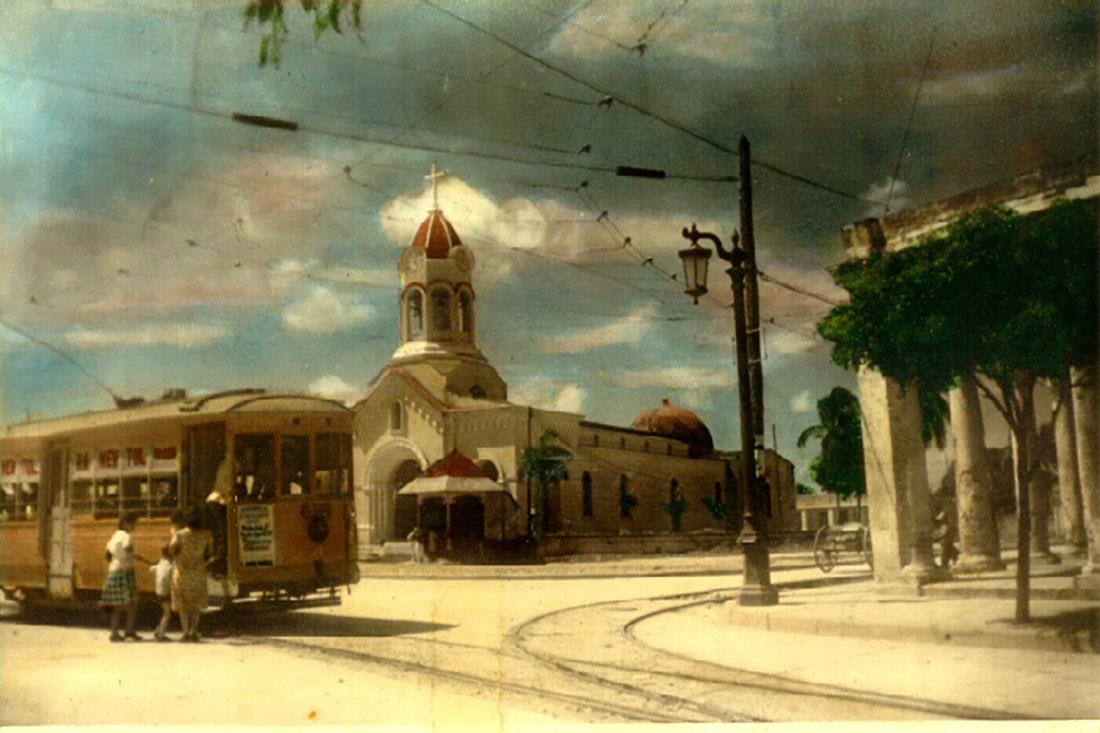The tram in Camagüey has a fascinating history since the 19th century, first pulled by pack animals and later moved by electricity, it traveled through the main roads, squares and areas of the city. In 1952 it was no longer used. Today the railways within the city are irrefutable testimonies of their presence.
There are traces in the modern city of Camagüey that accompany the history, legend and memory of its inhabitants, some of which generate questions about its past and others the inevitable comparisons with the present.
If you ask what is a tram? You may receive many responses, but most people will make a gesture with their shoulders indicative of ignorance, perhaps some will refer them to those railway lines that, in the arteries of Independencia, San Esteban and Ignacio Agramonte, among other roads, are preserved so as not to erase his presence from memory.
The arrival of the tram or urban train to the former town is due to the efforts of Enrique Loynaz del Castillo in 1893 to establish and exploit what at that time constituted a modern means of transport that few cities enjoyed. Despite the convoluted conditions of the urban life in the city, the purpose was feasible to connect the busiest arteries, areas and squares from different parts of the city.
Once the project was accepted, Loynaz del Castillo was appointed agent, he had to buy the cars for the company, an opportunity that the patriot found to bring into the country, hidden in the seats, 200 Remington rifles and 8,000 cartridges for the future independence struggle. A denunciation caused the weapons to be seized, Loynaz, duly warned, managed to flee. The service was inaugurated on November 11th, 1894.
The modern technology
The use of electricity and technological advances opened new horizons for the tram. On August 5th, 1905, Camagüey Electric Company presented a new tram project, with its approval the equipment required for such purposes arrives in the city, finally the act held in the old Camagüey Hotel on May 1st, 1908 inaugurated the electric tram.
And so, during the first years of its operation, cars are acquired and built, various routes run through Garrido, Bembeta, Avellanada, Mártires Avenue and La Caridad, Maceo, Independencia, among others to spice up the city atmosphere with the unmistakable bell of those sui generis trams.
However, the tram gradually languishes over the years, the absence of systematic repairs to the tracks and cars reducing its performance against competition from intra-city bus travel and the rise of automobiles. In 1952 the tram service closed.
In the memory of those who knew it, the destination of its cars is lost, some allege that they were sold as scrap, the truth is that there is no evidence of them, however, the imperishable traces of the railways are erected as a parapet that remember their transit through the city.
Present-day
The Camagüey Railway Museum dedicates one of its Stations to unveil the history of the tram in Camagüey, objects, texts, images and multimedia will take you into the fascinating tram world that has been immortalized in chronicles, films and works of art. The unmistakable bell that warns of your arrival opens the doors to discover one of the most original forms of transport in the city.
Translated by: Aileen Álvarez García








